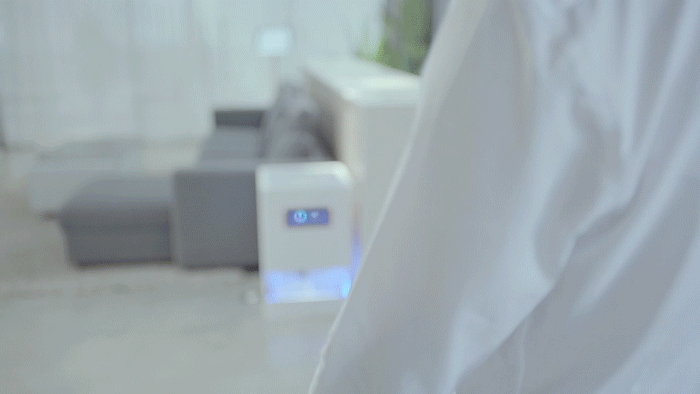Wireless charging on phones has finally started picking up pace in recent years, but all solutions are still tethered in some way or another. Aiming to address that, Xiaomi has unveiled the new Mi Air Charge technology, enabling users to remotely charge their devices without cables or pads.
Some recent phones now support wireless charging that is almost as fast as wired charging. For instance, the Xiaomi Mi 11 supports 50W wireless charging, which is faster than most of the competition. However, wireless charging is almost never as elegant as its wired counterparts – there are byproducts such as heat, energy loss and limited functionality. Worst of all, they need to be placed very precisely on a charging pad, making it even more difficult to use while charging than a regular cabled approach.
Xiaomi’s remote charging uses two core wireless technologies, space positioning and energy transmission. The in-house developed charging pile has five phase interference antennas built in to accurately detect and latch on to a smartphone, post which an array of 144 antennas transmits concentrated millimetre waves directly to the phone.

The phone will have to be fitted with a similar but miniaturized system, consisting of a beacon antenna to broadcast positioning information with low power consumption, and a receiving array of 14 antennas, which will convert the mm-wave signal emitted by the charger into electrical energy via a “rectifier circuit”.
In its current form, the Xiaomi Mi Air Charge technology is capable of 5W remote charging over a distance of “several metres”. Interestingly, the company claims that the charging speed will not be affected by physical obstacles in the line-of-sight or the number of devices being charged simultaneously.
In practice, this means that you’ll be able to charge your devices – phones, speakers, wearables, and other smart home devices – without having to do anything except being in the room.
Apart from the obvious questions around pricing and availability, Mi Air Charge raises a few more doubts over the functioning of this tech: will the wireless power supply components take up a lot of space within products? What will be the long term repercussions on the battery health? Will it ever reach a speed to match wired solutions? Are there any health hazards of having concentrated energy waves going around all of us? Will it be interoperable with devices from other manufacturers?
Only time will tell how user-friendly this entire approach is. Perhaps we will learn more about it at the upcoming global launch of the Xiaomi Mi 11 series.
from TechRadar - All the latest technology news https://ift.tt/3t60k2R



